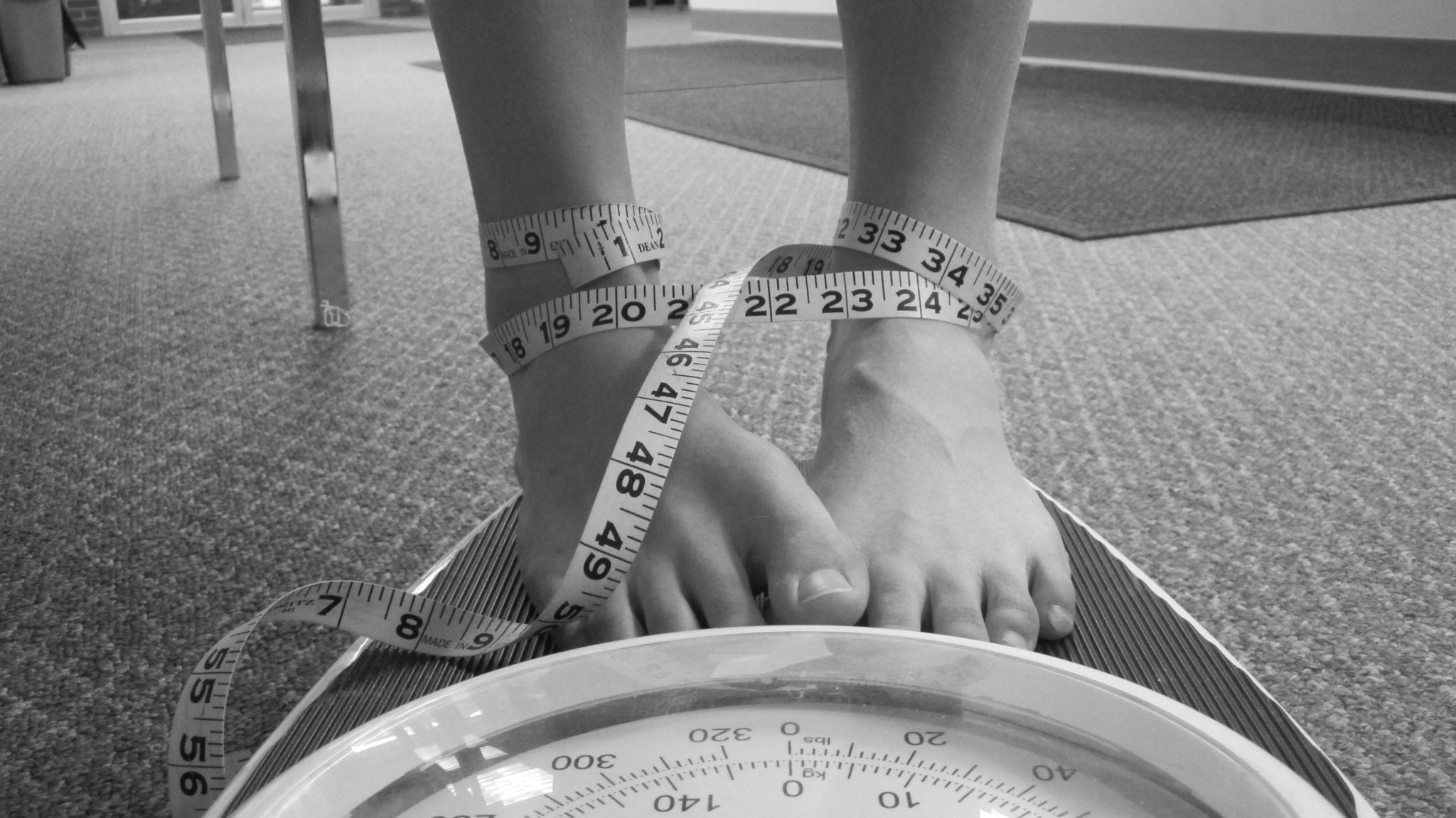Did You Know How Disturbed Eating Behaviors Affect You?

An eating disorder is an illness caused by troubled eating habits. It is ordinarily accompanied by severe distress about body weight, anxiety disorders, substance use, or depression. Eating disorders are serious physical as well as emotional problems and can have life-threatening consequences.
Disturbances may comprise of inadequate or excessive food intake, which ultimately promotes damaged well-being. They can evolve at any stage of life but are most common in adolescent years.

ANOREXIA NERVOSA (AN)
Generally, people suffering from Anorexia Nervosa live in a persistent fear of weight gain. Additionally, they perceive an unrealistic, distorted body image of themselves and see themselves as overweight, even when they are clearly not. These people are emaciated due to consumption of inadequate food. Surprisingly, anorexia has the highest mortality rate of any mental disorder.

Besides these usual symptoms, the following are also observed:
- Osteoporosis i.e. increased weakness and fragility of bones due to calcium loss
- Muscle atrophy, i.e. wasting of muscles
- Mild anemia
- Increased brittleness of hair and nails
- Drying and yellowing of skin
- Constipation
- Decreased blood pressure, breathing rate, and pulse rate
- Abnormal blood count
- Amenorrhea, i.e. absence of menstrual cycle in women
- Lanugo, i.e. fine hair development on extremities
- Cold intolerance
- Dehydration
- Brain and multi-organ damage
- Lethargy
- Infertility
Warning signs associated with the condition include:
- Idée fixe with body weight and shape
- Refusal to eat even when starving
- Skipping meals
- Eating only those foods with reduced calories or fat
- Increased exercising
- Difficulty in concentrating
- Lack of emotion
- Repeated weighing
- Purging after consuming regular meals
- Increased alcoholic incidences
- Abuse of stimulants such as energy boosters, dietary supplements, and medications
- Abuse of laxatives, diuretics and diet drugs

Furthermore, the causes associated with the condition include:
- Biological factors – genetics, and reduced levels of serotonin hormone.
- Psychological and emotional factors – low self-esteem, obsessive or compulsive traits, and perfectionism.
- Socio-cultural factors – media streams reinforcing thinness as ideal, advertisements promoting products that induce weight loss and peer pressure.
BULIMIA NERVOSA (BN)
Binge eating and purging cycles characterize Bulimia nervosa. Usually, compensation of the overeating follows the eating disorder. Moreover, this is associated with self-esteem overly related to body image and fear of weight gain. Bulimia can be the Purging type (self-induced vomiting) and Exercising type (fasting or over-exercising).


Symptoms of the condition include:
- Inflamed and sore throat
- Swollen salivary glands
- Increased teeth sensitivity and decay due to wearing out of enamel as a result of stomach hydrochloric acid exposure
- Acid reflux disorders
- Abnormal bowel functioning
- Bloating
- Intestinal distress
- Irritation from laxative abuse
- Dehydration
- Fainting
- Drying of skin
- Irregular heart rate
- Amenorrhea, i.e. irregular menstrual cycles
- Muscle cramps
- Imbalance of electrolytes like sodium, calcium, and potassium
Additionally, warning signs accompany the condition. Such as:
- Depression
- Anxiety
- Social isolation
- Distorted body image
- Self-injury
- Substance abuse
- Impulse behavior, i.e. risky sexual behaviors, shoplifting, etc.
Also, causes of the condition include:
- Biological factors – genetics, and influence of serotonin hormone.
- Psychological and emotional factors – low self-worth, impulsiveness, increased conflicts, and emotional, physical, or sexual abuse.
- Socio-culture factors – cultivation and reinforcement of being thin, peer pressure, and trauma or stress.
OTHER SPECIFIED FEEDING OR EATING DISORDERS (OSFED)
OSFED refers to a condition of medical illness in children, adolescents, and adults. Generally, people experience extremely disturbed eating habits and perceive a distorted body image of themselves. Various other symptoms occur in these people. For instance: weight fluctuations, disturbed menstrual cycles in women, compromised immune system, dehydration, lethargy, preoccupation with eating and body, increased anxiety, and dieting behaviors.
BINGE-EATING DISORDER (BED)
BED is associated with repeated binge-eating. Additionally, it involves no lack of control or guilt after overeating. Usually, people suffering are overweight or obese. Also, other symptoms can be observed. For example, lethargy, bloating, constipation, preoccupation with eating, the extreme dissatisfaction of body, low self-esteem, depression, self-harming behavior, osteoarthritis, kidney failure and high BP.

COMPULSIVE OVEREATING (COE)
Individuals habitually graze on large quantities of food.

NIGHT EATING SYNDROME (NES)
An eating disorder associated with a delayed circadian cycle of food consumption. Furthermore, people have no control over their binge eating activity. Often, these people are overweight or obese.

PRADER – WILLI SYNDROME (PWS)
Because of deprived function of some genes, PWS disorder is caused. Generally, it is found in infants and children.
- To begin with, the symptoms observed in infants, symptoms include weak muscles, poor feeding, and slow development. In children, symptoms include constant hunger state, intellectual impairment, and behavioral problems.
- However, in children, symptoms include constant hunger state, intellectual impairment, and behavioral problems.
ORTHOREXIA NERVOSA
Occasionally, people might suffer from an excessive preoccupation with consuming healthy food.

SELECTIVE EATING DISORDER (SED)
SED is also referred to as picky eating. Also, it involves extreme sensitivity to a particular taste.

DRUNKOREXIA
Drunkorexia involves purposely restricting food consumption in order to reserve food calories for alcoholic calories. Especially, it is observed in college students.

PREGOREXIA
In order to control the weight gained during pregnancy, women tend to undergo extreme dieting and over-exercising in order to control. This condition is referred to as Pregorexia.

GOURMAND SYNDROME
Due to damage to the frontal lobe of the brain, rare condition results. Consequently, obsessive focus on fine foods is observed.
Treatment Methods
Several treatment methods are available for the above-stated eating disorders. For instance:
- Medical Care and Monitoring – Addressing a health issue in one of the most crucial concerns.
- Nutrition – Provision of a meal plan to restore and stabilize weight.
- Therapy – Psychotherapy helps in recovery of an individual from any disorder.
- Medications – Medications are effective in resolving mood or anxiety symptoms during an eating disorder.

RELATED FACTS
- Surprisingly, LGBT (lesbian, gay, bisexual and transgender) experience an increased risk of developing anorexia and bulimia according to the National Eating Disorders Association.
- Moreover, ballet dancers develop eating disorders very often.
- Not to mention, anxiety is tightly associated with all types of eating disorders. According to a recent study, around 64% of 674 anorexic and bulimic participants suffered from an anxiety disorder.
- An appetite for substances like ice, hair, paint, metal, etc. is known as Pica Eating Disorder.

- Pro-Anorexia and Pro-Eating Disorder Websites center around “thinspiration.” Additionally, they promote anorexia by providing tips for accelerating weight loss.
- Also, pro-mia sites have been developed for those with bulimia symptoms.






Informative.